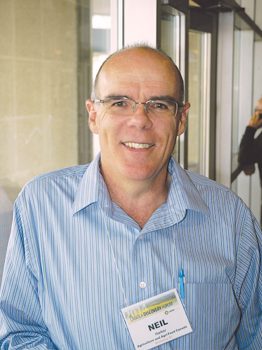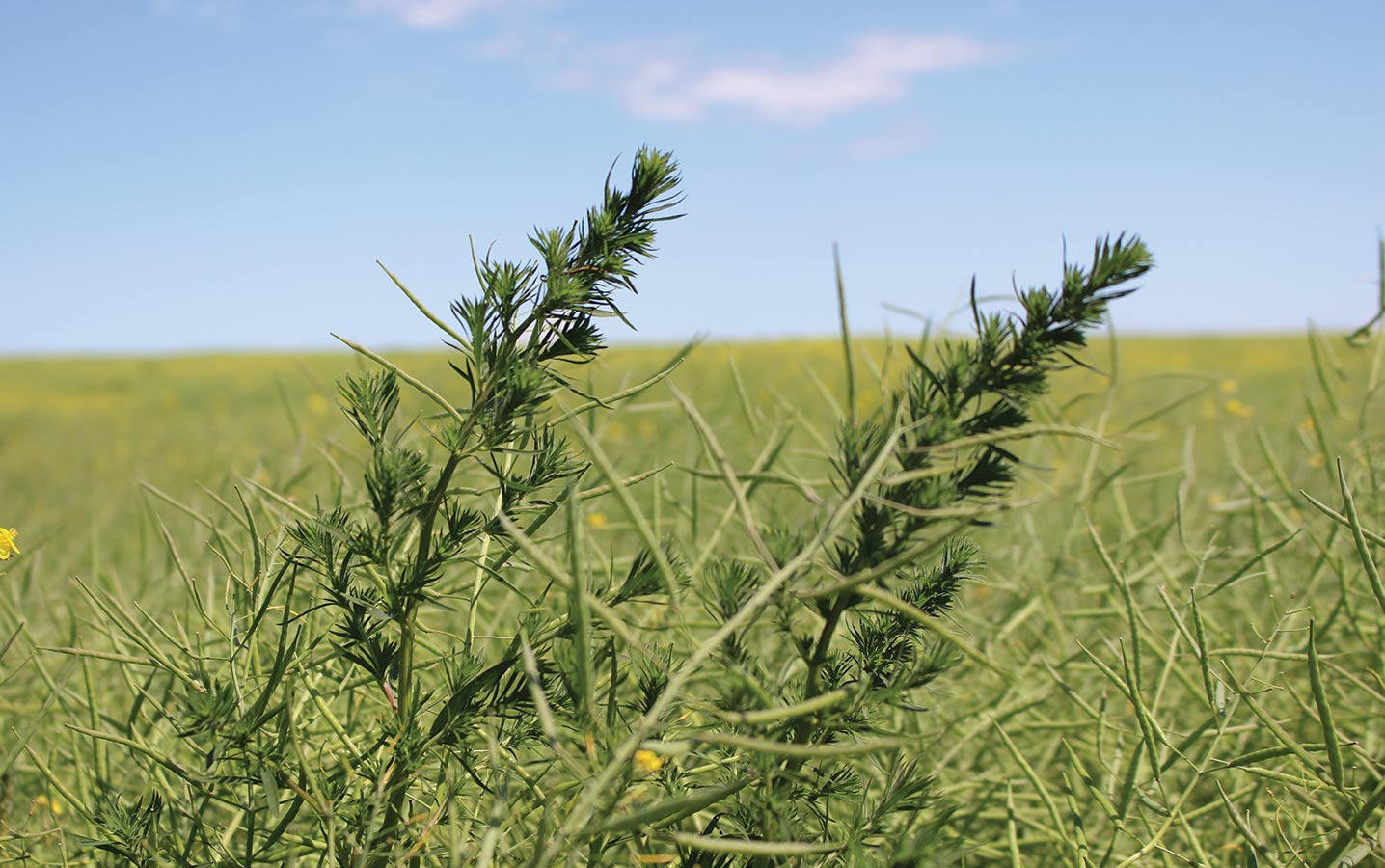The Continued Case for Reduced Tillage
Reduced tillage provides many benefits and is a great sustainability story for Canadian agriculture. Along with reducing diesel fuel and other energy inputs, improving efficiencies and sustainable land management, reduced tillage also improves soil health, reduces soil erosion, and builds and maintains carbon.
Here are five situations where tillage is often seen as a solution or risk, with tips on how or why to reduce tillage:
Residue management
Reduced tillage and direct seeding are well suited to much of Saskatchewan, Alberta and parts of Manitoba. In some areas, such as the Red River Valley in Manitoba, high crop residues make reduced tillage more of a challenge. Clint Jurke, agronomy director with the Canola Council of Canada, suggests that for all growers growing cereals and following with a canola crop, paying attention to the details of the harvest operation and weather conditions can go a long way to managing residues.
“It is important to have really good choppers and spreaders on the back of the combine and to make sure to spread the chaff as evenly as possible over the width of the cut swatch,” he says. “If chaff is not spread properly, it can concentrate into a windrow, making it difficult for the next canola crop to emerge through the heavy chaff layer.”
Shorter-statured cereals will lower residues. Diverse rotations with more low-straw crops help reduce accumulated residue loading. Another way to reduce the amount of material spread over the soil surface is to cut the crop as high as possible.
If growers experience difficulties with heavy residue and feel a need for harrowing, it should be done in the fall and not the spring and with as little soil disturbance as possible. Efficacy of harrowing is still debatable, with the focus on harvest management at combining as the priority.
Some growers use tillage to help dry out fields in the spring. This action has debatable benefit. Blackened soils do heat up more in spring, but also cool more in the nights. Tillage disrupts soil structure, which may reduce micro channels that help drain standing water away and reduces traction.

Tillage spreads soil-borne pathogens
From a disease management standpoint, tillage provides no benefits and in many cases increases the risk of spreading pathogens.
“There aren’t any diseases that can be controlled by tillage, and in most situations tillage makes it worse,” Jurke says. “Any field operation has the potential to move pathogens, but tillage operations physically lift and move the soil and the soil adheres to the machinery.”
Tillage also exposes soil to the elements, increasing erosion risk by wind or water action. “Researchers have determined that this is part of the clubroot problem,” Jurke says. “Although soil-borne diseases such as clubroot don’t produce airborne spores, when the soil is whipped up in the air due to wind action, those spores actually do travel a greater distance than the majority of the soil particles.” Tillage in the Edmonton area was a great way of spreading clubroot into more eastern parts of Alberta and potentially into western Saskatchewan. Air parcels received in western Saskatchewan do often originate in that Edmonton area.
Moving soil also spreads other diseases, including verticillium stripe. This new canola disease, although not quite as damaging as clubroot, is still a question mark that industry needs to address. In pulses, aphanomycetes is similar to clubroot in how the pathogen moves around. With blackleg, burying residue with tillage was thought to help, but recent science has shown the opposite.
“Overall, tillage moves diseases around much more than reduced tillage or direct seeding,” adds Jurke. “Direct seeding usually uses fairly narrow openers, which doesn’t move much soil around and involves only one piece of equipment for one operation. With conventional tillage, there are typically several operations plus the planting operation and growers are opening their exposure to soil-borne pathogen movement two to four times more than with just a one-pass, zero-till drill.”
Integrated weed management
Integrated management is important to weed control and prevention of resistant weeds. Neil Harker, research scientist with Agriculture and Agri-Food Canada (AAFC) in Lacombe, Alberta, explains that cropping-system diversity is one of the most important strategies for integrated weed management. “This requires some longer-term thinking by growers to recognize that while some rotations won’t always make the most profit in that year, they will be more profitable over the long term because they have saved irreplaceable weed management tools.” Namely, herbicides.
Other important strategies include establishing a competitive crop, growing competitive cultivars, increasing seeding rates and improving fertilizer efficiency for the crop over weeds. Using optimal agronomic practices, careful harvesting and preventing the return of viable weed seed to the field at harvest is also key.

“Think about weed management as a system, not just year to year,” says Breanne Tidemann, research scientist and Ph.D. student at AAFC Lacombe. “For example, cleavers can be difficult to control in canola, so make sure to manage it in other parts of the rotation, such as in cereals where there are more options. Also use good pre-seeding weed control, and don’t just rely on glyphosate. Tank-mix it with other herbicide groups.”
Growers need to be open about new options as issues with weed resistance continue to put pressure on existing weed management tools. Glyphosate-resistant kochia has been identified in Western Canada, glyphosate-resistant Russian thistle has been confirmed in Montana, and others potentially on the horizon are wild oat, cleavers and green foxtail– all dominant weeds in our cropping system. In some central-Alberta fields, wild oat is resistant to all major Group 1 and Group 2 herbicides as well as triallate (Avadex), leaving growers with Treflan as their only selective herbicide option.
“We used to be able to say we still had tools left, but those tools are rapidly disappearing, and once they are lost they are gone. Those resistant populations are here to stay,” Harker says. “Therefore, growers may need to consider new tools such as pulling a chaff cart, baling straw, buying a Harrington Seed Destructor or implementing some other tools such as occasional tillage to remain competitive and profitable.”
Labour
Robert Nolting continuous crops 3,000 acres of canola, spring and winter wheat, oats, soybeans, plus timothy and ryegrass for certified seed near Rosser, Manitoba. He switched to reduced tillage in the early ’90s mainly because of reduced labour requirements and an effort to reduce the number of field operations to fall anhydrous banding and one-pass seeding.
“Over the years we have seen improvements in the soil and improved yields, particularly in canola,” says Nolting, who is also a director and vice president of the Northern Prairies Ag Innovation Alliance (NPAIA), formerly the ManDak Association.
Residue management can be a challenge, so Nolting replaces the knives on the straw chopper every year and makes sure the straw is spread the full width of the 40-foot combine. He also started growing soybeans about 10 years ago, which provides a low residue crop in the rotation.
| Year | Acres in no-till (millions) |
|---|---|
| 1991 | 4.8 |
| 1996 | 11.3 |
| 2001 | 21.8 |
| 2006 | 33.3 |
| 2011 | 41.2 |
Source: Statistics Canada
He typically seeds all of the canola on the soybean stubble, and puts soybeans into cereal stubble, usually maintaining a minimum three- or four-year crop rotation.
Sustainability
Sustainability is related to market access, whether based on regulations, industry and buyer standards or consumer demands. “Global markets are looking for more certainty and assurances from supply chains that they are meeting sustainability requirements and can demonstrate a sustainable carbon footprint,” explains Dennis Rogoza, sustainability advisor to the Canola Council of Canada. “Different markets are asking for different criteria, but ultimately the agriculture industry in Canada is expected to be able to demonstrate they can meet the minimum benchmarks required by various global markets. Although Canadian growers and industry are believed to be meeting the highest standards, they need to be able to demonstrate that to the EU and other key markets.”
One of the positive sustainability elements for western Canadian agriculture is the significant land-use management change from conventional fallow systems to conservation tillage systems.
“The net benefit of minimum or no-till and continuous cropping is levels of carbon captured and maintained in the soil and an improved carbon footprint calculation for western agriculture for all crops,” Rogoza says. “This significant land-use management change has also dramatically increased the acreage of cash commodity crops like canola, along with farm incomes and profitability that allows growers to reinvest in continued sustainable practices to meet global demands.”





